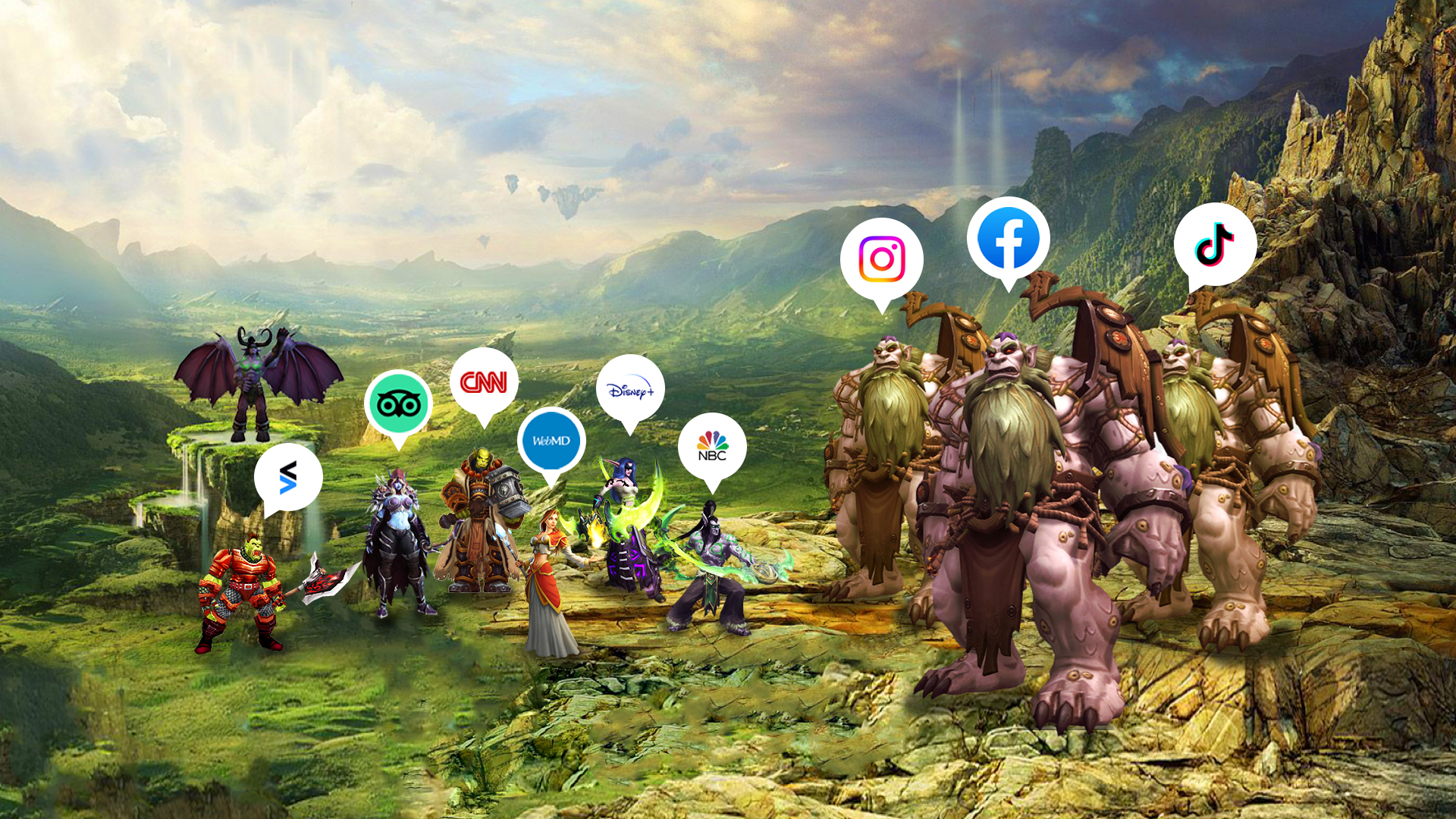Do Interactive Content Engagement Experiences Store Your Data? What You Need to Know
November 2022

Do Interactive Content Experiences Store Your Data? What You Need to Know
You may be asking yourself the question: What is an interactive content experience and what does it do? Well, interactive content experiences are designed to make dynamic changes to mobile, tablet, and desktop user experiences in two ways: engaging with customers and adapting to different consumer behaviors. Over the course of a single quarter, Insticator Commenting increased The Washington Times’ site engagement by over 150% while driving strong revenue simultaneously. Interactive content experiences are becoming an integral part of any growing publisher’s marketing toolkit, especially as these ad types continue to offer leading-edge data collection capabilities.
That raises an important question that both advertisers and consumers want to know: Do interactive content experiences store your data?
Interactive content experiences can provide an incredible amount of insight into consumer behaviors, constantly changing the way ad interactions work. Data collection is a major part of gathering those insights and using them to determine future ad types that can increase your website traffic and your overall bottom line. So, let’s talk about how data is used to customize the ad experience to make better and more engaging ads for your valuable customers.
What is An Interactive Content Experience?
So, what is an interactive content experience? Simply put, interactive content experiences are dynamic advertising widgets and web components that are made specifically for user interaction. Visitors and customers alike can engage with different types of ad experiences that may ask them to sample a product (such as trying out photo filters) or voice their opinion (with an interactive poll).
There are several internal elements at play that make interactive content experiences work. Location-based services help make ads more relevant to a consumer’s own region, while dynamic mapping tools can collect information to help make localization more relevant in the future. When it comes to ad delivery, there are many moving parts as well. Publishers who partner with out-of-house advertisers can choose between different ad delivery methods, speeds, and aesthetic options to curate a custom ad experience.
Types of Interactive Content Experiences
Advertisers are deploying too many types of interactive content experiences to list here, but the most popular ad types deserve a special shout-out. Brands can be incredibly innovative on their own, and reaching into the dynamic toolbox of interactive content experiences only broadens their opportunities for success. Here are a few different methods on how to create interactive content experiences:
1. Polls
The average consumer feels good when their voice is heard. Adding quick polls to blogs and other highly-trafficked areas of your website can make a huge impact – both in terms of profits and growth. These ads are highly interactive and can collect key data points about the way users are interacting with your site, what their preferences are, and how likely they are to enjoy similar ads in the future.
2. Interactive Video Ad Experiences
Video ads remain an incredibly powerful interactive ad type that has proven to earn publishers up to 4X the amount of revenue they’re currently making. Video ads are interactive enough to engage with users without causing an obstacle to website navigation.
With Insticator, you can create custom video content that is catered to your publishing audiences. With slider videos, plug-and-play widgets, floating videos, and more, you can see for yourself how easy it is to facilitate growth with video ads.
3. Playable Game Ad Experiences
Much like video ads, playable ads let users engage in a bit of gameplay that is guided by clues or hints. Users can opt into them, so they aren’t intrusive. Most playable ads even show users whether they “win” or “lose,” helping them get excited about advertised products. Many mobile games will include playable game apps that allow users to sample a small piece of the game while encouraging them to learn more.
These are by no means the only methods on how to create an interactive content experience, so if you would like to learn more feel free to contact us!
Interactive Content Experiences and Data Collection
More and more advertisers are starting to implement interactive content experiences for a reason. Conversion and retention rates are soaring with no end in sight. Not to mention, interactive content experiences give way to much better Lifetime Value (LTV) and a slew of other benefits that can give you incredible insight into customer behaviors.
In-Ad Data
Different types of interactive ads – from polls to video games – can provide unique in-ad data about every single person who interacts with it. Advertisers can see a consumer’s interaction path, which is elemental in helping them improve ad experiences for customers and publishers who platform interactive ads. Since there is a wide range of interactions for the average user to engage with, there are subsequently unrivaled offers to collect useful consumer data. Better data means better information about how you can improve the ad experience for present, prospective, and future customers.
Non-interactive ads (also called “static ads”) gather data by collecting clicks and impressions. Interactive ads can move beyond this type of data gathering to include invaluable metrics about consumer behavior, website use, and more.
Do Interactive Content Experiences Store Your Data?
It’s important to note that users are not required to download or install the advertised app after using the ad. It is still possible to track their interaction path in the back end. Ultimately, in-ad data is used to improve user experiences and predict future trends. Privacy is a big concern in the growing digital world, and this brings up a common question: do interactive content experiences store your data? The answer is that interactive content experiences do not store an individual’s personal data.
Even Google Ads uses advanced machine learning and Artificial Intelligence (AI) to collect insightful data to track and predict customer behaviors. With proper data management systems and tools, they can track the data that matters without breaching personal information. It is critical that publishers and advertisers have a stellar grasp of their data management capabilities to prevent security or trust issues between consumers and ads.
We hope to have answered common questions about interactive content experiences such as: what is an interactive content experience and do they store your data?
Grow Relationships With Real Consumers Using Custom Interactive Content Experiences
Insticator offers full ad management services along with interactive content experiences solutions that have the potential to exponentially increase your revenue. Your own audience will contribute to the rich data that can be gathered using more engaging advertising methods. While data security is always a valid concern, it can be a comfort to know that the data collected by interactive content experiences is solely used to improve customer experiences moving forward.
Learn more about improving your publishing platform’s user experience needs and ways of how to create interactive content experiences when you get in touch with Insticator today. We offer insightful, data-driven solutions that are tailored to the audience you want to attract. Benefit from dynamic reporting, boosted revenue, and deeper insights when you work with an Insticator expert to build out your brand.

Written by



